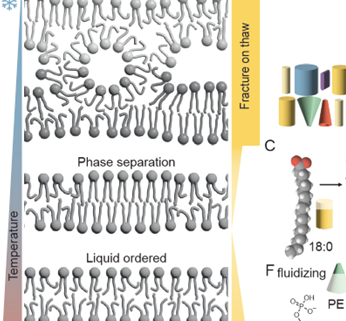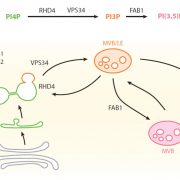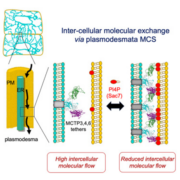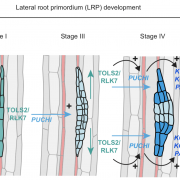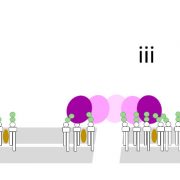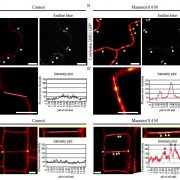Review. Chilling out: How plants remodel membranes to survive the cold
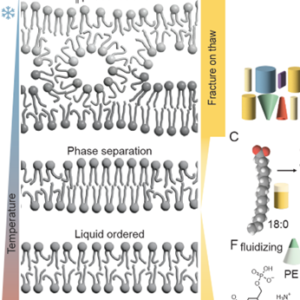 Low temperatures disrupt cellular processes and require metabolic adaptation. Cold-induced lipid remodeling helps maintain membrane permeability and prevents phase separations that can lead to cellular damage. In this review, Shomo, Li and colleagues provide an overview of the mechanisms by which plants remodel their membrane lipids to adapt to low temperatures and cold stress. They focus on glycerolipids, sphingolipids, and phytosterols. Additionally, they examine how cold stress affects membrane composition and functionality at the subcellular level, presenting current glycerolipidomic data from Arabidopsis thaliana, maize, and sorghum. This data highlights the consistency as well as the variability of lipid responses across species. The authors delve into the three main ways of lipid alteration. First is acyl editing and headgroup exchange, where plants modify their membrane lipids to maintain membrane integrity and function. The second way is regulating lipase activity, which plays a crucial role in lipid remodeling during cold stress. The third is changes in phytosterol abundance, where altering phytosterol levels help to stabilize membranes under cold conditions. The review points out recent advances and accomplishments in the field with an informative overview of observed lipid changes, and highlights gaps in current the knowledge and areas needing further investigation to fully understand and manipulate plant cold tolerance. Summary by Ann-Kathrin Rößling (@AK_Roessling) 10.1093/plphys/kiae382
Low temperatures disrupt cellular processes and require metabolic adaptation. Cold-induced lipid remodeling helps maintain membrane permeability and prevents phase separations that can lead to cellular damage. In this review, Shomo, Li and colleagues provide an overview of the mechanisms by which plants remodel their membrane lipids to adapt to low temperatures and cold stress. They focus on glycerolipids, sphingolipids, and phytosterols. Additionally, they examine how cold stress affects membrane composition and functionality at the subcellular level, presenting current glycerolipidomic data from Arabidopsis thaliana, maize, and sorghum. This data highlights the consistency as well as the variability of lipid responses across species. The authors delve into the three main ways of lipid alteration. First is acyl editing and headgroup exchange, where plants modify their membrane lipids to maintain membrane integrity and function. The second way is regulating lipase activity, which plays a crucial role in lipid remodeling during cold stress. The third is changes in phytosterol abundance, where altering phytosterol levels help to stabilize membranes under cold conditions. The review points out recent advances and accomplishments in the field with an informative overview of observed lipid changes, and highlights gaps in current the knowledge and areas needing further investigation to fully understand and manipulate plant cold tolerance. Summary by Ann-Kathrin Rößling (@AK_Roessling) 10.1093/plphys/kiae382


